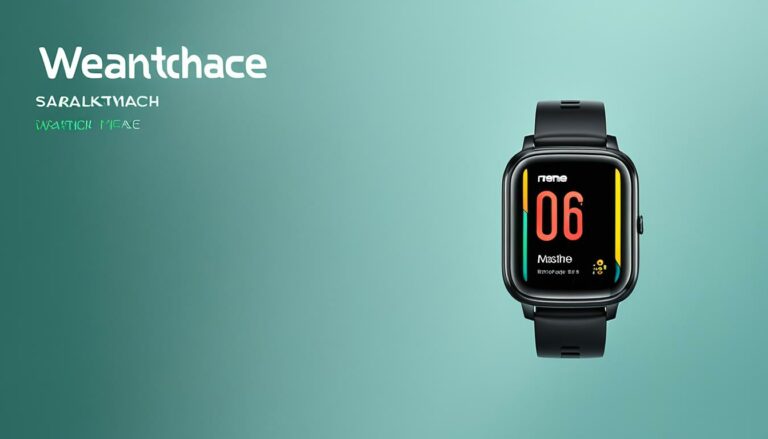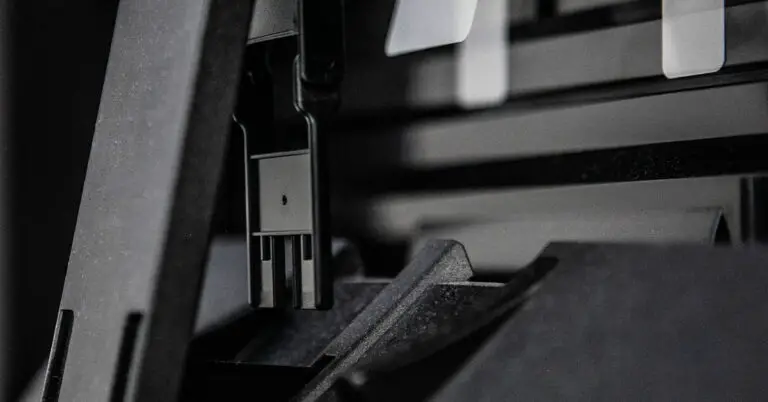Explore AMOS Basic BOBs and Sprites With Us
Originally posted on January 12, 2024 @ 1:55 am
Welcome to our complete handbook on AMOS Basic BOBs and Sprites! If you are an Amiga user who has recently obtained AMOS, get ready for a thrilling adventure into the realm of game design. In this guide, we will lead you through the fundamentals of AMOS Basic programming language, the necessary equipment, and the capabilities of BOBs and sprites in crafting captivating games and animations.
AMOS Basic is a renowned high-level programming language specifically designed for game development on the Amiga platform. With its user-friendly interface and powerful features, AMOS Basic empowers both beginners and experienced programmers to create interactive games and animations with ease.
Key Takeaways:
- AMOS Basic is a high-level programming language for game development on the Amiga platform.
- Extra memory is highly recommended to maximize your AMOS programming experience.
- The AMOS Editors offer an integrated programming environment for effortless coding, sprite designing, and sound sample integration.
- Collision detection with the background is achievable in AMOS through color value comparisons.
- AMOS Basic Tutorial will equip you with the necessary knowledge and skills to create your own games.
The AMOS Editors (Easy AMOS, AMOS 1.35, AMOS Pro)
Programming in AMOS may come as a bit of a shock if you’re more used to the sort of unfriendly programming languages that the so-called ‘professionals’ swear by. AMOS is perhaps the first true example of a totally integrated programming environment. Although such a tag sounds rather complicated, what it essentially means is that every single step involved in the development of a program can be carried out from within the AMOS Editor. Whether you’re writing the program’s code, designing sprites or pulling together all the sound samples that your program uses, you need never leave the AMOS Editor.
Easy AMOS
If you’re a beginner in programming, Easy AMOS is the perfect choice. As its name suggests, it simplifies the programming process with a user-friendly interface, making it easier for novice programmers to grasp the basics. Easy AMOS provides an intuitive environment to write code and design sprites, allowing you to create simple and engaging programs without feeling overwhelmed.
AMOS 1.35
AMOS 1.35 is the standard version of the AMOS programming language. It offers a comprehensive range of features and functionality to develop more complex programs. With its extensive library of commands and functions, AMOS 1.35 provides greater flexibility for experienced programmers to unleash their creativity. Whether you’re creating games, utilities, or applications, AMOS 1.35 provides the tools you need to bring your ideas to life.
AMOS Pro
For those looking for advanced capabilities and enhanced performance, AMOS Pro is the ultimate choice. AMOS Pro includes all the features of Easy AMOS and AMOS 1.35, with the addition of powerful extensions and optimizations. With AMOS Pro, you can push the boundaries of your programming projects, creating professional-grade games and applications that take full advantage of the Amiga’s capabilities.
“AMOS is perhaps the first true example of a totally integrated programming environment.”
Within the AMOS Editors, you have everything you need to develop your programs. From writing code to designing sprites and managing sound samples, the AMOS Editors offer a seamless and efficient workflow. You don’t have to switch between different tools or environments – everything is conveniently available within the AMOS Editor, providing a smooth and streamlined programming experience.

Next, we’ll explore collision detection in AMOS and how you can implement it in your game development process.
Collision Detection with Background
If you want to create immersive and interactive games in AMOS, collision detection is a crucial aspect to consider. It allows you to determine if a collision has occurred between bobs/sprites and the background. While AMOS does not provide a built-in function for collision detection with the background, there is a technique that you can implement in your code to achieve this functionality.
The technique involves checking the color value of the background at the specific location of the bob/sprite. By comparing the color value to a predetermined value that represents the background, you can detect if a collision has taken place. This method requires you to manually set up the color value for the background and update it as necessary.
Implementing collision detection with the background involves the following steps:
- Create a function to check the color value of the background at the bob/sprite’s position.
- Compare the color value to the predetermined background color.
- If the color values match, a collision has occurred.
Here’s an example code snippet that demonstrates how to implement collision detection with the background in AMOS:
FUNCTION CheckCollision(spriteX, spriteY)
backgroundColor = GetBackgroundColor(spriteX, spriteY)
IF backgroundColor = backgroundCollisionColor THEN
RETURN True
ELSE
RETURN False
ENDIF
ENDFUNCTION
In the code snippet above, the function CheckCollision takes the position of the sprite (spriteX, spriteY) as input and retrieves the color value of the background at that position using the GetBackgroundColor function. It then compares the background color value to the predetermined background collision color to determine if a collision has occurred. If the colors match, the function returns True; otherwise, it returns False.
By implementing collision detection with the background using this technique, you can create more dynamic and interactive games in AMOS. It allows you to add custom collision behaviors based on the background, such as irregular background collision detection or sprite-specific collision effects.
Next, we will explore the basics of AMOS Basic and how to write code to bring your game ideas to life. Stay tuned!
AMOS Basic Tutorial
AMOS Basic is a high-level programming language specifically designed for game development on the Amiga. It offers a user-friendly interface and powerful features that make creating interactive games and animations a breeze. In this tutorial, we will cover the fundamentals of AMOS Basic, including writing code, creating sprites, and implementing game logic. We’ll also provide you with helpful code snippets and explanations to deepen your understanding. By the end of this tutorial, you’ll have a solid grasp of AMOS Basic and be ready to embark on your game development journey.
Writing Code in AMOS Basic
When it comes to scripting in AMOS, the language provides a straightforward syntax that is easy to grasp. Code is written using a combination of keywords, variables, and commands. Here’s a simple example to get you started:
SET SPRITE 1, 100, 100
COLOR 1, 255, 0, 0
DRAW SPRITE 1
This code sets up a sprite at coordinates (100, 100) and colors it red. The sprite is then drawn on the screen. You can customize this snippet by adjusting the sprite position, color, and other properties to suit your needs.
Creating Sprites
In AMOS Basic, sprites are essential for game development as they represent characters, objects, and animations within your game world. To create a sprite, you need to define its shape and attributes. Here’s an example:
CREATE SPRITE 1, 32, 32
SPRITE 1, "player.sprite"
POSITION SPRITE 1, 200, 200
In this snippet, we create a sprite with a width and height of 32 pixels. The sprite is loaded from the file “player.sprite” and positioned at coordinates (200, 200). Feel free to replace “player.sprite” with the filename and path of your desired sprite.
Implementing Game Logic
AMOS Basic allows you to add game logic to your projects by using conditional statements, loops, and other control structures. Let’s take a look at a simple game logic example:
WHILE NOT GAME_OVER
IF BUTTON(1)
MOVE SPRITE 1, 5, 0
ELSE IF BUTTON(2)
MOVE SPRITE 1, -5, 0
END IF
UPDATE SPRITES
WEND
In this code snippet, we have a game loop that runs until a game-over condition is met. Within the loop, we check for button inputs and move the sprite accordingly. The UPDATE SPRITES command ensures that any changes we make to the sprite are displayed on the screen. Customize this code to handle different game actions and conditions based on your specific game mechanics.
Now that you’ve explored the basics of AMOS Basic, it’s time to dive deeper into the capabilities of this powerful game development language. In the next section, we’ll provide you with advanced code examples and techniques to further enhance your game development skills.
Conclusion
AMOS Basic is an incredibly versatile programming language that empowers developers to create a wide range of games and animations on the Amiga platform. With its integrated development environment and user-friendly interface, AMOS Basic is suitable for both beginners and experienced programmers, allowing them to craft games with stunning graphics and captivating gameplay.
By harnessing the power of BOBs (Blitter Objects) and sprites, you can breathe life into your game ideas and bring them to fruition. These powerful tools enable you to create immersive gaming experiences that captivate players and transport them to the nostalgic world of retro game development.
Unlocking the secrets of sprite animation with the AMOS Basic compiler opens up a world of creative possibilities. You can effortlessly design and animate vibrant characters, objects, and landscapes, infusing your games with a delightful visual appeal. Let your imagination run wild as you push the boundaries of what is possible with AMOS Basic and delve into the captivating realm of retro game development.
So, why wait? Take the plunge into the exciting world of AMOS Basic, where you can unleash your creativity and turn your game development dreams into reality. Whether you’re a seasoned programmer or just starting your journey, AMOS Basic is your gateway to creating captivating games and embracing the charm of retro gaming. Happy coding!
FAQ
What is AMOS Basic?
AMOS Basic is a high-level programming language specifically designed for game development on the Amiga. It provides a user-friendly interface and powerful features for creating interactive games and animations.
What are AMOS Editors?
The AMOS Editors, including Easy AMOS, AMOS 1.35, and AMOS Pro, are integrated development environments that allow you to write code, design sprites, and work on sound samples all within the same environment.
How can I detect collision with the background in AMOS?
To detect collision between bobs/sprites and the background in AMOS, you need to check the color value of the background at the specific location of the bob/sprite. By comparing the color value to a predetermined value representing the background, you can determine if a collision has occurred.
Is there a built-in function for collision detection with the background in AMOS?
No, AMOS does not provide a built-in function for collision detection with the background. However, you can achieve this functionality by implementing a technique that involves manually setting up the color value for the background and updating it as necessary in your code.
Can you provide a basic AMOS tutorial?
Certainly! Our AMOS Basic tutorial covers the fundamentals of AMOS Basic, including how to write code, create sprites, and implement game logic. We also provide code examples to help you understand how things work.







